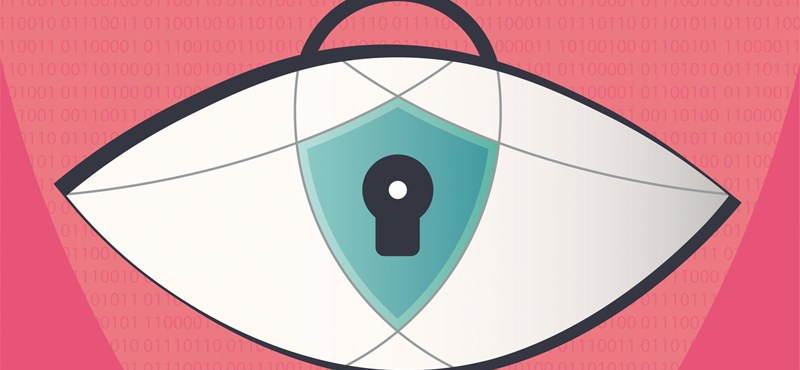[{“available”:true,”c_guid”:”28073874-a29d-4b7e-bd7c-c4e09109ed31″,”c_author”:”hvg.hu”,”category”:”gazdasag”,”description”:”Egyelőre két csarnokra kért engedélyt kínai beruházó.”,”shortLead”:”Egyelőre két csarnokra kért engedélyt kínai beruházó.”,”id”:”20240114_Megvannak_a_tervek_amik_alapjan_hamarosan_kezdodhet_a_szegedi_BYDgyar_alapozasa”,”image”:”https://api.hvg.hu/Img/ffdb5e3a-e632-4abc-b367-3d9b3bb5573b/28073874-a29d-4b7e-bd7c-c4e09109ed31.jpg”,”index”:0,”item”:”14a1253d-502c-4929-bb9d-e8f55f96b8b0″,”keywords”:null,”link”:”/gazdasag/20240114_Megvannak_a_tervek_amik_alapjan_hamarosan_kezdodhet_a_szegedi_BYDgyar_alapozasa”,”timestamp”:”2024. január. 14. 12:29″,”title”:”Megvannak a tervek, amik alapján hamarosan kezdődhet a szegedi BYD-gyár alapozása”,”trackingCode”:”RELATED”,”c_isbrandchannel”:false,”c_isbrandcontent”:false,”c_isbrandstory”:false,”c_isbrandcontentorbrandstory”:false,”c_isbranded”:false,”c_ishvg360article”:false,”c_partnername”:null,”c_partnerlogo”:”00000000-0000-0000-0000-000000000000″,”c_partnertag”:null},{“available”:true,”c_guid”:”d45bbfc4-9658-4dce-bfbe-a8735bee023a”,”c_author”:”hvg.hu”,”category”:”itthon”,”description”:”Mellőzhetik az iskolaigazgatók véleményét a fizetésrendezésnél. Az állami fenntartó részletszabályokra vár.”,”shortLead”:”Mellőzhetik az iskolaigazgatók véleményét a fizetésrendezésnél. Az állami fenntartó részletszabályokra vár.”,”id”:”20240115_Talan_megse_lesz_beleszolasuk_az_iskolaigazgatoknak_a_tanarok_beremelesebe”,”image”:”https://api.hvg.hu/Img/ffdb5e3a-e632-4abc-b367-3d9b3bb5573b/d45bbfc4-9658-4dce-bfbe-a8735bee023a.jpg”,”index”:0,”item”:”7e7d0e1d-bd98-4c2b-985a-7fed3fc9fc8e”,”keywords”:null,”link”:”/itthon/20240115_Talan_megse_lesz_beleszolasuk_az_iskolaigazgatoknak_a_tanarok_beremelesebe”,”timestamp”:”2024. január. 15. 07:49″,”title”:”Talán mégse lesz beleszólásuk az iskolaigazgatóknak a tanárok béremelésébe”,”trackingCode”:”RELATED”,”c_isbrandchannel”:false,”c_isbrandcontent”:false,”c_isbrandstory”:false,”c_isbrandcontentorbrandstory”:false,”c_isbranded”:false,”c_ishvg360article”:false,”c_partnername”:null,”c_partnerlogo”:”00000000-0000-0000-0000-000000000000″,”c_partnertag”:null},{“available”:true,”c_guid”:”127bfc8f-2a74-4366-89b2-584bd309e32b”,”c_author”:”hvg.hu”,”category”:”cegauto”,”description”:”Nincs napirenden a felvetés.”,”shortLead”:”Nincs napirenden a felvetés.”,”id”:”20240116_A_miniszterium_reszerol_nincs_problema_a_zold_rendszamokkal”,”image”:”https://api.hvg.hu/Img/ffdb5e3a-e632-4abc-b367-3d9b3bb5573b/127bfc8f-2a74-4366-89b2-584bd309e32b.jpg”,”index”:0,”item”:”0c3b23b5-9468-405a-b655-9429857384fa”,”keywords”:null,”link”:”/cegauto/20240116_A_miniszterium_reszerol_nincs_problema_a_zold_rendszamokkal”,”timestamp”:”2024. január. 16. 09:42″,”title”:”A minisztérium részéről nem téma a zöld rendszámok megvonása”,”trackingCode”:”RELATED”,”c_isbrandchannel”:false,”c_isbrandcontent”:false,”c_isbrandstory”:false,”c_isbrandcontentorbrandstory”:false,”c_isbranded”:false,”c_ishvg360article”:false,”c_partnername”:null,”c_partnerlogo”:”00000000-0000-0000-0000-000000000000″,”c_partnertag”:null},{“available”:true,”c_guid”:”00f469c9-3b21-49d1-9a52-ac208987fb66″,”c_author”:”hvg.hu”,”category”:”itthon”,”description”:”A korábban jogerősen két év fogházra ítélt szülész-nőgyógyásznak ugyan a köztársasági elnöki kegyelemnek köszönhetően nem kellett börtönbe vonulnia, ám a foglalkozástól való eltiltását nem bírálta felül Áder János, de ez a tiltás is hatályát vesztette 2021 elején.”,”shortLead”:”A korábban jogerősen két év fogházra ítélt szülész-nőgyógyásznak ugyan a köztársasági elnöki kegyelemnek köszönhetően…”,”id”:”20240115_Gereb_Agnes_hajlektalanszallo_nogyogyasz”,”image”:”https://api.hvg.hu/Img/ffdb5e3a-e632-4abc-b367-3d9b3bb5573b/00f469c9-3b21-49d1-9a52-ac208987fb66.jpg”,”index”:0,”item”:”82e8d3be-58b2-4cd6-b15c-1e677d5294e1″,”keywords”:null,”link”:”/itthon/20240115_Gereb_Agnes_hajlektalanszallo_nogyogyasz”,”timestamp”:”2024. január. 15. 16:28″,”title”:”Önkéntes nőgyógyászként praktizál Geréb Ágnes egy hajléktalanszállón”,”trackingCode”:”RELATED”,”c_isbrandchannel”:false,”c_isbrandcontent”:false,”c_isbrandstory”:false,”c_isbrandcontentorbrandstory”:false,”c_isbranded”:false,”c_ishvg360article”:false,”c_partnername”:null,”c_partnerlogo”:”00000000-0000-0000-0000-000000000000″,”c_partnertag”:null},{“available”:true,”c_guid”:”e8ed8285-35d8-410e-bf87-9f999a09848a”,”c_author”:”hvg.hu/MTI”,”category”:”sport”,”description”:”Az elismerést Puskás Ferenc dédunokája adta át.”,”shortLead”:”Az elismerést Puskás Ferenc dédunokája adta át.”,”id”:”20240115_Tizenhatoson_kivulrol_ollozott_gol_szerzoje_nyerte_a_Puskasdijat__video”,”image”:”https://api.hvg.hu/Img/ffdb5e3a-e632-4abc-b367-3d9b3bb5573b/e8ed8285-35d8-410e-bf87-9f999a09848a.jpg”,”index”:0,”item”:”673ba57d-0c34-44f1-b5e9-e4039d1c27f1″,”keywords”:null,”link”:”/sport/20240115_Tizenhatoson_kivulrol_ollozott_gol_szerzoje_nyerte_a_Puskasdijat__video”,”timestamp”:”2024. január. 15. 22:04″,”title”:”Tizenhatoson kívülről ollózott gól szerzője nyerte a Puskás-díjat – videó”,”trackingCode”:”RELATED”,”c_isbrandchannel”:false,”c_isbrandcontent”:false,”c_isbrandstory”:false,”c_isbrandcontentorbrandstory”:false,”c_isbranded”:false,”c_ishvg360article”:false,”c_partnername”:null,”c_partnerlogo”:”00000000-0000-0000-0000-000000000000″,”c_partnertag”:null},{“available”:true,”c_guid”:”2cd2d1d4-46e0-48dd-8f34-a17fbc804d14″,”c_author”:”hvg.hu”,”category”:”cegauto”,”description”:”A 9 millió forint feletti hivatalos listaárnál jelentősen olcsóbban hazavezethetők most a Spring készletes példányai.”,”shortLead”:”A 9 millió forint feletti hivatalos listaárnál jelentősen olcsóbban hazavezethetők most a Spring készletes példányai.”,”id”:”20240115_akar_3_millio_forinttal_olcsobban_is_kifoghatok_uj_dacia_spring_villanyautok”,”image”:”https://api.hvg.hu/Img/ffdb5e3a-e632-4abc-b367-3d9b3bb5573b/2cd2d1d4-46e0-48dd-8f34-a17fbc804d14.jpg”,”index”:0,”item”:”b5b94e7b-5423-47f6-945f-cec8f89a69e4″,”keywords”:null,”link”:”/cegauto/20240115_akar_3_millio_forinttal_olcsobban_is_kifoghatok_uj_dacia_spring_villanyautok”,”timestamp”:”2024. január. 15. 06:41″,”title”:”Akár 3 millió forinttal olcsóbban is kifoghatók itthon új Dacia villanyautók”,”trackingCode”:”RELATED”,”c_isbrandchannel”:false,”c_isbrandcontent”:false,”c_isbrandstory”:false,”c_isbrandcontentorbrandstory”:false,”c_isbranded”:false,”c_ishvg360article”:false,”c_partnername”:null,”c_partnerlogo”:”00000000-0000-0000-0000-000000000000″,”c_partnertag”:null},{“available”:true,”c_guid”:”af83c1b5-6988-4a62-8721-95516e25a4fe”,”c_author”:”HVG360″,”category”:”360″,”description”:”Irán nagyfiú lett és haladéktalanul új diplomáciai megközelítés szükséges, ha a világ el akar kerülni egy nagyobb összecsapást, olvasható a Guardianben. A Times véleménycikke szerint a húszik elleni fellépés elkerülhetetlen volt, szemben sok más amerikai beavatkozással külföldön. Nem boldog Kína a tajvani elnökválasztás után, de ettől talán még veszélyesebb, véli a Wall Street Journal vezércikke. Elnézően kezeli az EU a szerb elnök Moszkva-barátságát, írja a Financial Times. A Human Rights Watch volt vezetője szerint a hágai bíróság befogadhatja Dél-Afrika beadványát, amely szerint Izrael népirtás hajt végre Gázában.”,”shortLead”:”Irán nagyfiú lett és haladéktalanul új diplomáciai megközelítés szükséges, ha a világ el akar kerülni egy nagyobb…”,”id”:”20240114_Nemzetkozi_lapszemle”,”image”:”https://api.hvg.hu/Img/ffdb5e3a-e632-4abc-b367-3d9b3bb5573b/af83c1b5-6988-4a62-8721-95516e25a4fe.jpg”,”index”:0,”item”:”eae6e3a6-2c2e-4f98-b27d-829edd7d33bf”,”keywords”:null,”link”:”/360/20240114_Nemzetkozi_lapszemle”,”timestamp”:”2024. január. 14. 11:30″,”title”:”Nemzetközi lapszemle: \”Már nem Amerika, hanem Irán a legfőbb hatalom a Közel-Keleten\””,”trackingCode”:”RELATED”,”c_isbrandchannel”:false,”c_isbrandcontent”:false,”c_isbrandstory”:false,”c_isbrandcontentorbrandstory”:false,”c_isbranded”:false,”c_ishvg360article”:true,”c_partnername”:null,”c_partnerlogo”:”00000000-0000-0000-0000-000000000000″,”c_partnertag”:null},{“available”:true,”c_guid”:”a66a74a8-1028-4025-83fd-83e7ef9a77e0″,”c_author”:”hvg.hu”,”category”:”tudomany”,”description”:”A xantángumi az élelmiszeriparban és a kozmetikában is fontos szerepet tölt be. Koreai kutatók viszont egy egész más területen szeretnék a legjobbat kihozni belőle: az akkumulátorelektródákat tennék tartósabbá vele.”,”shortLead”:”A xantángumi az élelmiszeriparban és a kozmetikában is fontos szerepet tölt be. Koreai kutatók viszont egy egész más…”,”id”:”20240115_xantangumi_felhasznalasa_cink_ion_akkumulatorok_vedofoliaja”,”image”:”https://api.hvg.hu/Img/ffdb5e3a-e632-4abc-b367-3d9b3bb5573b/a66a74a8-1028-4025-83fd-83e7ef9a77e0.jpg”,”index”:0,”item”:”ddf88f39-9086-428d-baae-6d8dec8c2937″,”keywords”:null,”link”:”/tudomany/20240115_xantangumi_felhasznalasa_cink_ion_akkumulatorok_vedofoliaja”,”timestamp”:”2024. január. 15. 11:03″,”title”:”Beletettek egy kozmetikumot az akkumulátorokba – az eredmény magáért beszél”,”trackingCode”:”RELATED”,”c_isbrandchannel”:false,”c_isbrandcontent”:false,”c_isbrandstory”:false,”c_isbrandcontentorbrandstory”:false,”c_isbranded”:false,”c_ishvg360article”:false,”c_partnername”:null,”c_partnerlogo”:”00000000-0000-0000-0000-000000000000″,”c_partnertag”:null}]

We recommend it from the first page












































